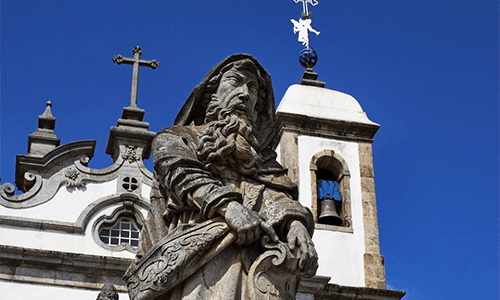Jul 8, 2019
|Last updated on March 23rd, 2021 at 10:58 am
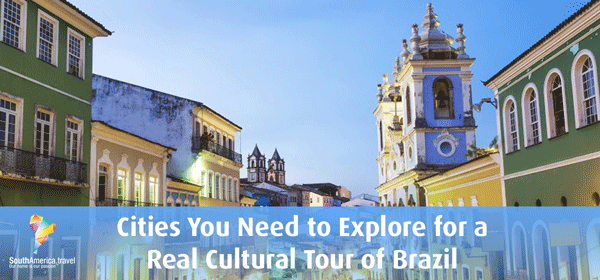
Brazilian Culture is not one. Brazil is a melting pot of cultures due to its historical ties with Portugal, Africa, Asia, and Europe. Travelers will discover that every city offers a chance to experience the indigenous cultures of Brazil that are still very much prevalent and respected in today’s society.
For example, the state of Minas Gerais boasts many cities in Brazil which ooze culture and authenticity. Five of those being destinations we listed below. The state’s overall history comes from the abundance of mineral riches, which inspired its name, Minas Gerais or when translated – “General Mines.” As the fourth largest state in Brazil with the second largest population, one can observe many cultural influences throughout the entire state. This article features specific cities that come as highly recommended, must-see locations in the state of Minas Gerais, as well as other cities in Brazil that we recommend visiting to obtain a truly authentic Brazil travel experience. Let’s begin!
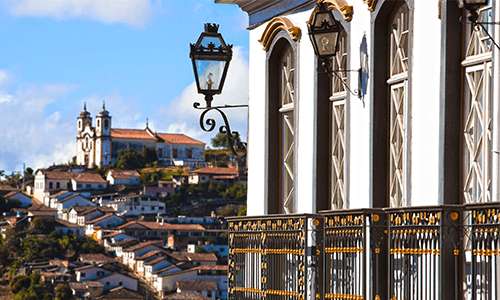
Ouro Preto the Colonial Brazilian Culture:
Founded at the end of the 17th century, Ouro Preto served as the focal point of Brazil’s Gold Rush. Ouro Preto translates to “black gold,” serving as a reminder to the once prosperous mines of the city. Mina da Passagem opened in 1719 however and currently holds the title as the largest, open to the public gold mine in the world. Located in Mariana, a small town on the outskirts of Ouro Preto, tourists should take a day trip to visit. The mine offers guided tours on an old cable car where one can learn about the history of the mine and the surrounding area.
Deemed a UNESCO World Heritage Site, Ouro Preto holds an interesting history and boasts gorgeous architecture. The architecture here spans from quaint colonial houses to immense baroque-style churches. These churches also feature famous sculptures by Aleijadinho. Born in Ouro Preto, many consider Aleijadinho as one of Brazil’s greatest sculptors and artists. His work is placed throughout the city, and even the entire country, so if you happen to miss seeing them in Ouro Preto, you are bound to spot them elsewhere. However, touring Ouro Preto is a great way to begin.
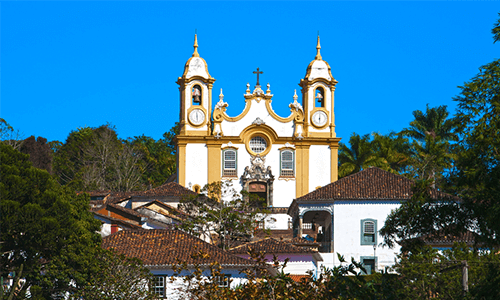
Tiradentes
Tiradentes has an immense history and an overall feeling of tranquility. Its colonial and baroque style architecture fill the streets. Traditional restaurants that serve regional specialties can be found on any corner. The Matriz de Santo Antonio Church, which Aleijadinho designed, shows a remarkable example of Baroque architecture. Hundreds of kilograms of gold adorn the inside, in connection to Brazil’s gold rush and the Portuguese colonists. The colonists exported large portions of Brazilian gold back to the royal family during that time. Though they made the exception of allowing the use of gold in the construction of churches there. Due to this, the locals built several churches with large amounts of gold embellishments, as a way to ensure the riches stay within their city.
Congonhas
This city contains an Italian influence that visitors can see directly through the architecture featured in Basilica Santuario do Bom Jesus de Matosinhos Church. The beautiful Rococo style interior demonstrates these cultural influences. Another art piece, well known in Congonhas is The Prophets. Aleijadinho sculpted them between 1800-1805. All placed symmetrically in front of the Basilica, each displaying a prophecy in Latin. This city is also known for its events during Holy Week. Though, the event on Holy Friday comes highly recommended. Especially to visitors who wish to experience the culture within the city of Congonhas.
Bahia, the African Brazilian Culture:
The next couple of cultural cities are in the state of Bahia, in the northeast region of Brazil. Bahia contains the largest and most distinctive imprint of African culture and customs within the state. Below discover a few cities that allow tourists the opportunity to fully experience the culture of Bahia:
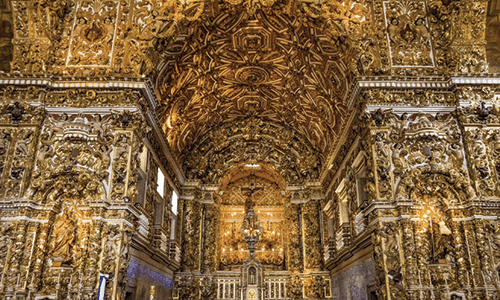
Salvador da Bahia
Salvador da Bahia is the capital of Bahia. Founded in 1549 by the Portuguese as the first capital of Brazil, it takes the title of the oldest colonial city in the Americas. This city is highly recognized for its history, Carnival, and Brazilian cuisine. The local cuisine centers around spices and seafood. Visitors enjoy indulging in delicious cuisine through street vendors and nearby restaurants. The most common ingredient used is azeite-de-dende. This ingredient derives from an oil extracted from palm trees which were brought to Bahia by African slaves. In fact, as the first slave port in the Americas, the African cultural influence makes this city the center of Afro-Brazilian culture. There are many things to see and do on a tour of Salvador da Bahia.
Baroque Cachoeira, the little, charming African Brazilian Culture:
The colonial town of Baroque Cachoeira sits by the Paraguacu River. Founded in the 16th century, the city was built from the importance and influence of the sugarcane on the local economy. However currently, Baroque Cachoeira is designated as a national monument due to housing most of Brazil’s authentic Afro-Brazilian rituals.
An example of this features a festival by Irmandade da Boa Morte. Irmandade da Boa Morte is a highly renowned, Afro-Catholic religious group. Black descendants of the 19th-century slaves created this religious order around the dedication to abolition. Many recommend this festival to give visitors the opportunity to fully immerse themselves within the culture. During a weekend in August, the festival contains multiple steps. Beginning with a street parade followed by a solemn mass. And concluded with a cheery procession of traditional Samba de Roda.
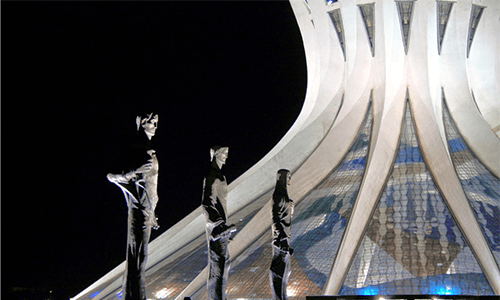
Brasilia, the Very Modern Brazilian Culture:
Located in the eastern region of the state within the Federal District, sits the capital of Brazil: Brasilia. This city contains about 124 embassies with the infrastructure to host many events and tourists. Festas Juninas, an example of one of its larger and well-known festivals, celebrates Catholic Saints. While taking a tour of Brasilia, we recommend you visit the renowned Cathedral of Brasilia.
Oscar Niemeyer designed this Roman-Catholic cathedral and Joaquim Cardozo constructed it. The cathedral was dedicated to the Blessed Virgin Mary and proclaimed as the Queen and Patroness of Brazil. The design of the building is extraordinary due to its hyperboloid structure. Sixteen concrete columns weighing around 90 tons each, hold together this structure. Situated mostly below ground, the cathedral only shows the baptistry roof, glass ceiling and well tower above the ground. Many people hold theories for what the hyperbolic section represents. However, one common theory tells of two hands moving upwards to heave. While others believe that the structure resembles a white crown or a crown of thorns. Come see the church for yourself to determine which theory you think holds true.
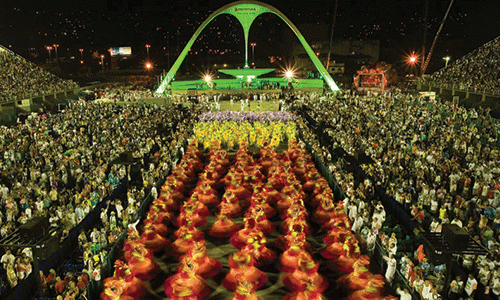
Rio de Janeiro, the Brazilian Culture Melting Pot:
As a municipality in Brazil, Rio de Janeiro is in the southeastern region of Brazil, along the coast of the South Atlantic Ocean. Many beautiful beaches and geography make up Rio, however, it also houses a rich culture and history. The Rio Carnival brings fame to the city as the biggest carnival in the world! We highly recommended visitors attend the lively celebration as it is an excellent exhibition of Brazilian culture. Carnival takes place during February and acquires over two million in attendance each day. We highly recommend staying for the Samba parade. Which features samba music and choreography with beautiful, ornate and vibrant attire.
Sitio Roberto Burle Marx is another fantastic feature of Rio’s culture. The Sitio holds 40.7-acres that Roberto Burle originally owned. He was a world-renowned artist for his tropical garden designs. Here, visitors are invited to wander around the property and take in all of his works of art. Two of the featured pieces are his landscape collection of a botanical garden and reflection pools. Many commend this location for its aspects of intertwining contrasting imagery, such as nature and culture.
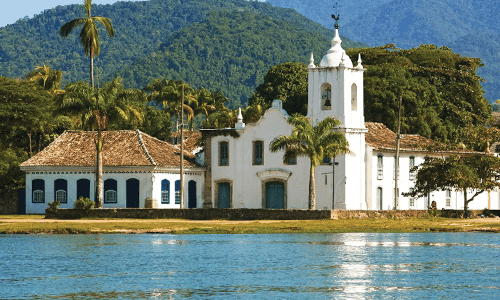
Paraty, Brazilian Culture and Colonial History:
Recognized as a National Historic Site since 1966, Paraty famously lives in a state of preservation from the colonial times. Lined with quaint, white buildings adorned with latticed windows, the streets of Paraty hold a gorgeous backdrop of the surrounding Atlantic Forest. Dozens of musical and cultural events occur here. Many recognize the town for its local festivals on Catholic holy dates. For example, the Feast of the Holy Ghost. A very popular bourbon jazz festival also occurs in Paraty every May. This event is perfect for visitors looking to immerse themselves in the musical culture of Paraty.
Another location within the city, Casa da Cultura, comes highly recommended to visitors as well. This place occupies a historic 18th-century house originally built in 1754 which opened to the public in 200. It currently holds a permanent exhibition on local history and culture. Also within the house, a salon of indigenous culture allows visitors to see the hand-made ‘carpets’ of colored sawdust and flower petals. Visitors are able to walk over these carpets as they enter, as they are protected by glass. The festival of Corpus Christi, which occurs in June, also features these gorgeous works of art.
Choose Your Favorite Cities in Brazil for a Cultural Tour
This list of cities in Brazil is for those looking to gain an authentic understanding of the gorgeous cultures represented in Brazil. We recommend that you incorporate these cities into your Brazil tour package however, the Colonial Gems & Historic Cities in Brazil Tour is a fantastic place to start! Contact one of our travel experts to solidify your plan!
Mentioned in this article


